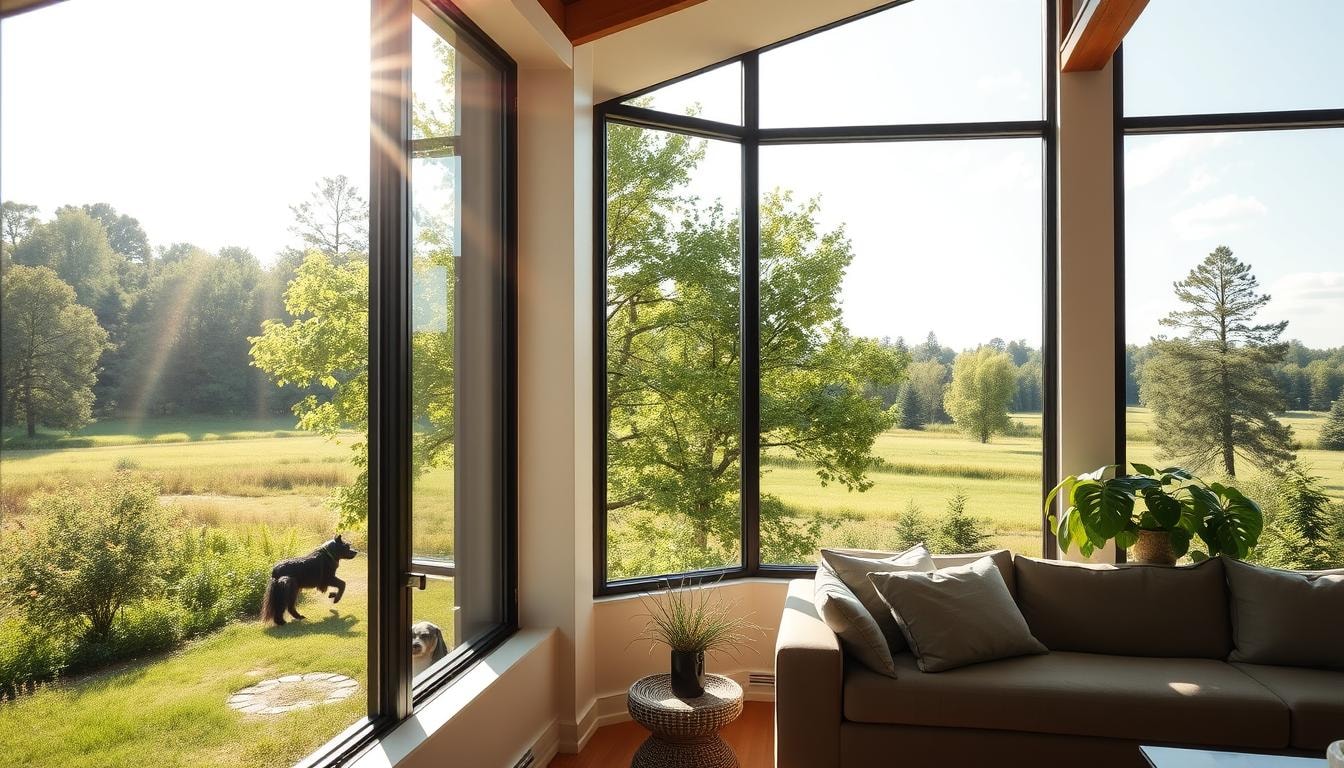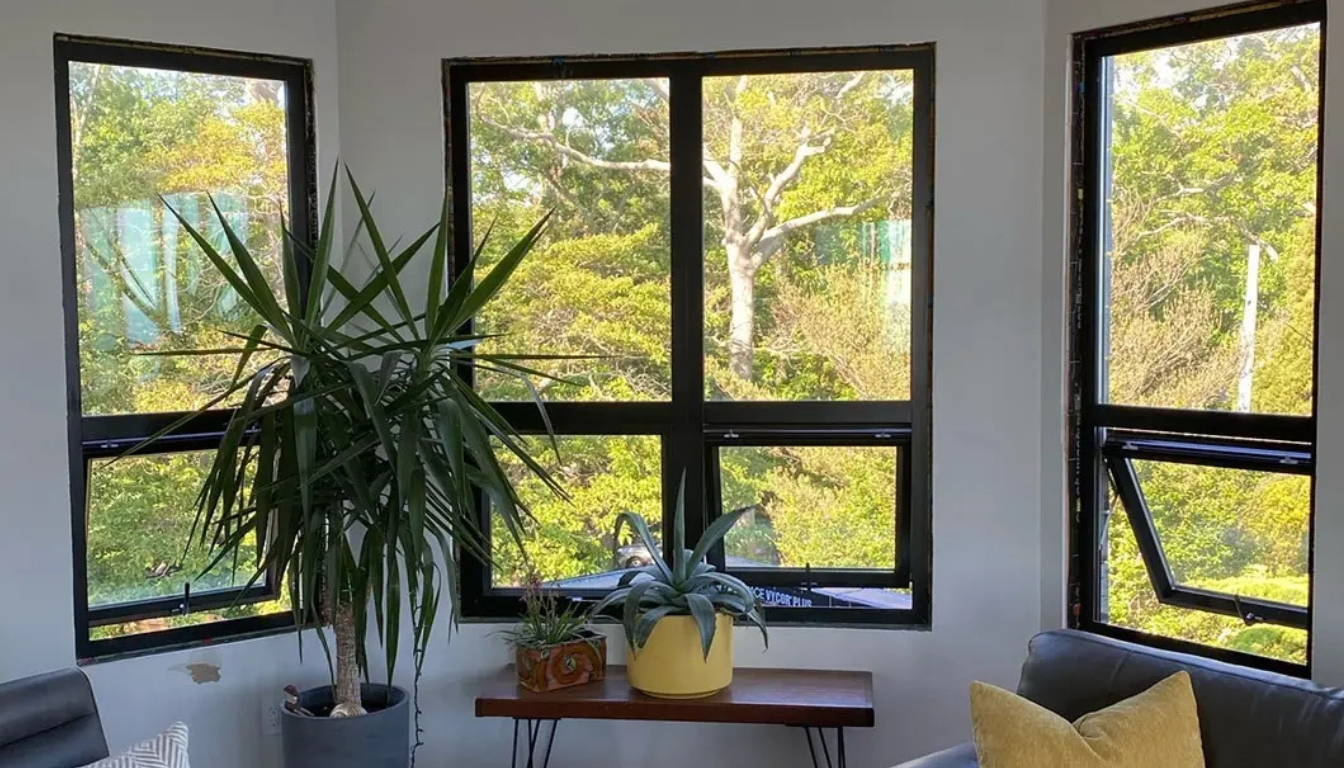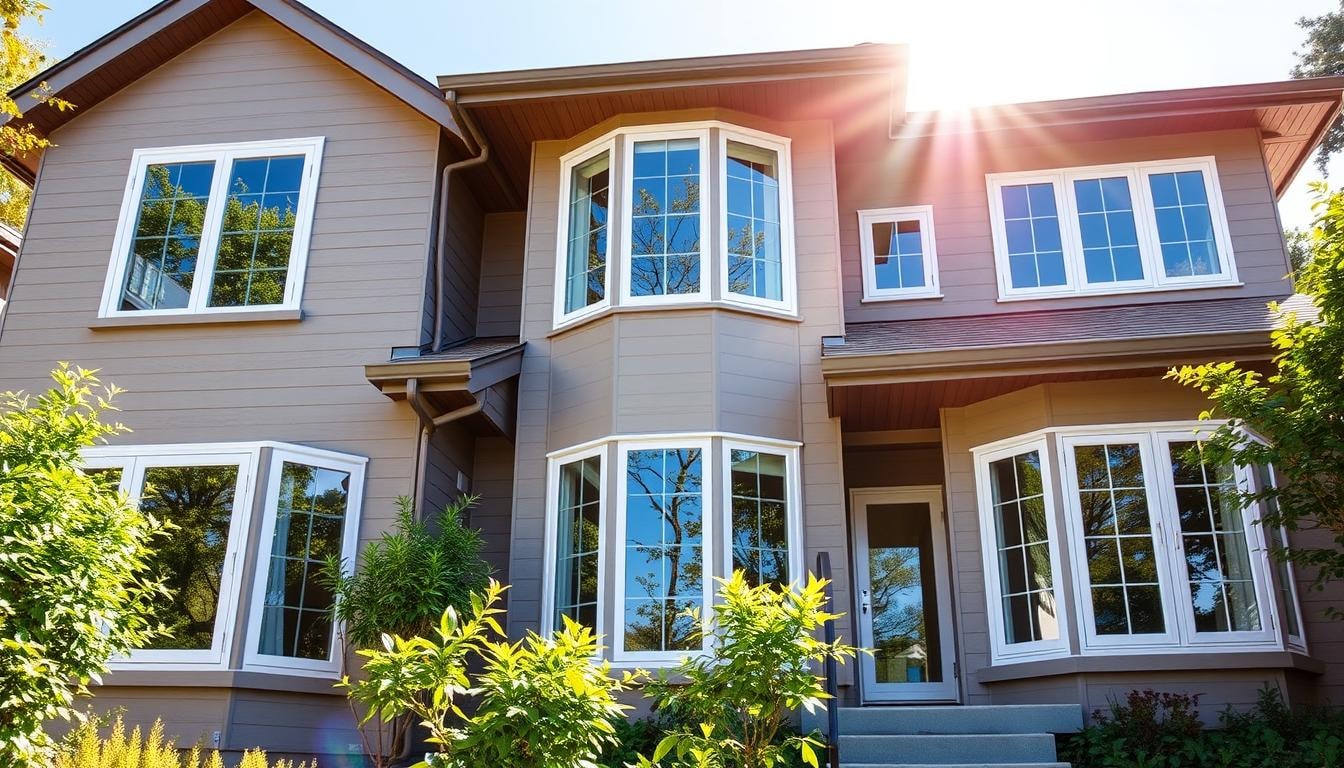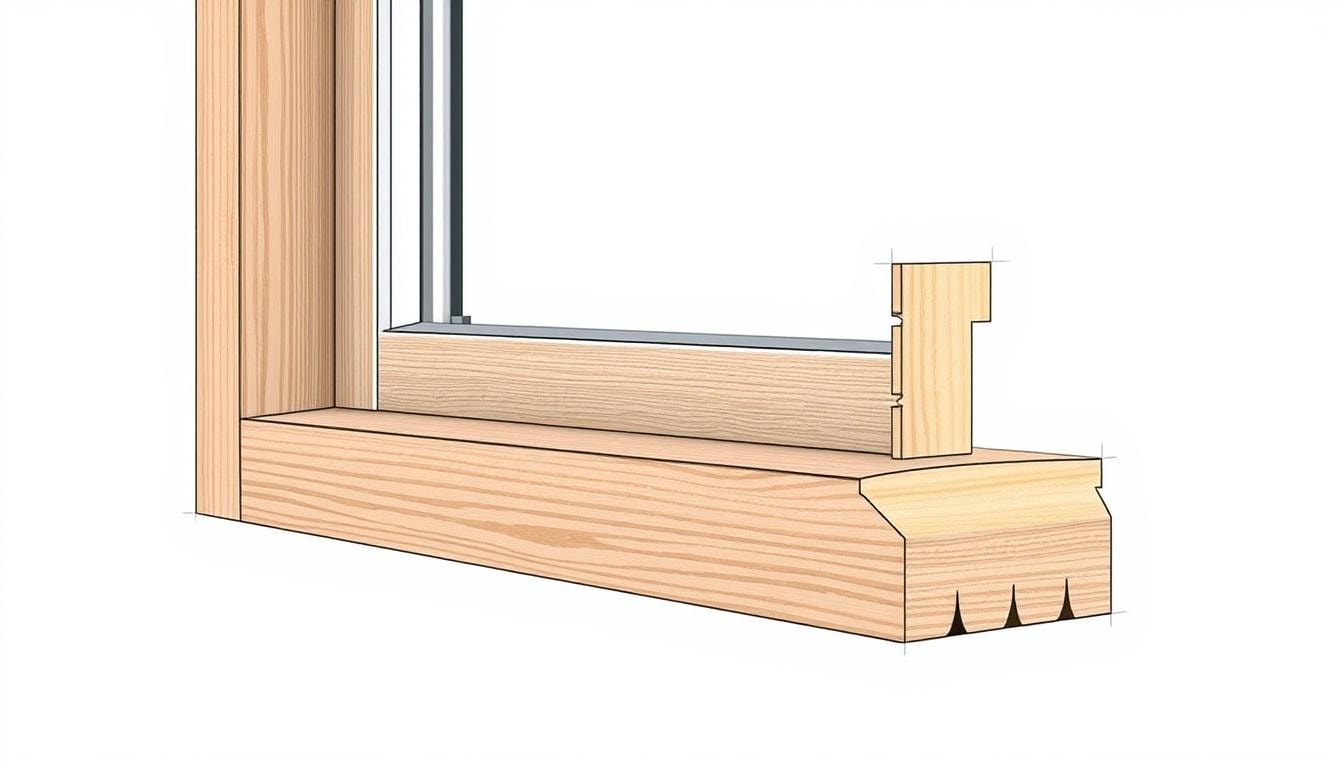
Standard Window Jamb Depth: A Complete Guide to Window Frame Components
Window jambs are key parts of window frames. They help the frame stand strong and align right. There are two kinds: side jambs (vertical) and head jamb (horizontal). The usual depth is between 3 1/4 inches and 4 9/16 inches.
Getting the jamb depth right is very important. It affects how well the window works, looks, and saves energy.
Key Takeaways
- Window jambs come in two main types: side jambs and head jambs
- Standard jamb depths typically range from 3 1/4 to 4 9/16 inches
- Accurate measurement of jamb depth is essential for proper window installation
- Proper jamb installation ensures functionality, aesthetics, and energy efficiency
- Jamb depth can affect the overall window frame size and fit
Understanding Window Jambs and Their Function
Window jambs are key to your home’s windows working well. They are the vertical and horizontal parts of the frame. They help support the structure and make windows easy to open and close.
Types of Window Jambs
There are mainly two types of window jambs. Side jambs are the vertical parts, and the head jamb is the horizontal top part. Together, they make a strong and safe window frame.
Structural Support and Alignment
Window jambs keep the window strong and in place. They help the window sash move smoothly. They also hold the support latches and hinges that help the window open and close.
Operation and Security Features
Window jambs also help the window work right. They have tracks for operational windows like sliding or double-hung ones. They also have latches, hinges, and deadbolts for security.
Knowing how important window jambs are helps homeowners and builders. It ensures windows work well, save energy, and stay safe.
Standard Window Jamb Depth and Measurements
Knowing the standard window jamb depth is key for a good fit and function. It usually ranges from 3 1/4 inches to 4 9/16 inches. Getting the measurements right is important for a perfect fit and proper window installation.
To measure the jamb depth, use a metal tape measure. Measure the width between the side jambs and the height between the top jamb and the sill. For single-hung and double-hung windows, aim for a jamb depth of 3 1/2 to 4 inches. Also, make sure the sash depth is at least 3/4 inch.
- Standard window jamb depth ranges from 3 1/4 inches to 4 9/16 inches
- Use a metal tape measure to measure the width between side jambs and the height between top jamb and sill
- For single-hung and double-hung windows, the jamb depth should be between 3 1/2 and 4 inches
- The sash depth should be at least 3/4 inch
Getting the measurements right is crucial for a proper fit and smooth window installation or replacement. By knowing the standard window jamb size and measuring correctly, you can make sure your windows work well. This also improves your home’s look and feel.
Window Jamb Extensions and Their Purpose
Window jamb extensions are key for fitting windows in thicker walls. They attach to the standard jambs, extending to fit the wall’s depth. This makes the window look polished and complete.
Common Extension Materials
Vinyl, wood, and composite are top picks for jamb extensions. Vinyl is durable and easy to care for. Wooden extensions add a classic look. Composite materials offer a mix of benefits.
Installation Considerations
Installing jamb extensions needs careful work. They must be securely attached to the frame and the wall. This ensures a tight seal and keeps air leaks out.
Depth Variables and Customization
- Jamb extensions vary in depth, from 1/2 inch to 4 inches or more.
- Homeowners can choose the right depth for their walls, ensuring a perfect fit.
- Vinyl window jamb extensions are great for thicker walls and a clean look.
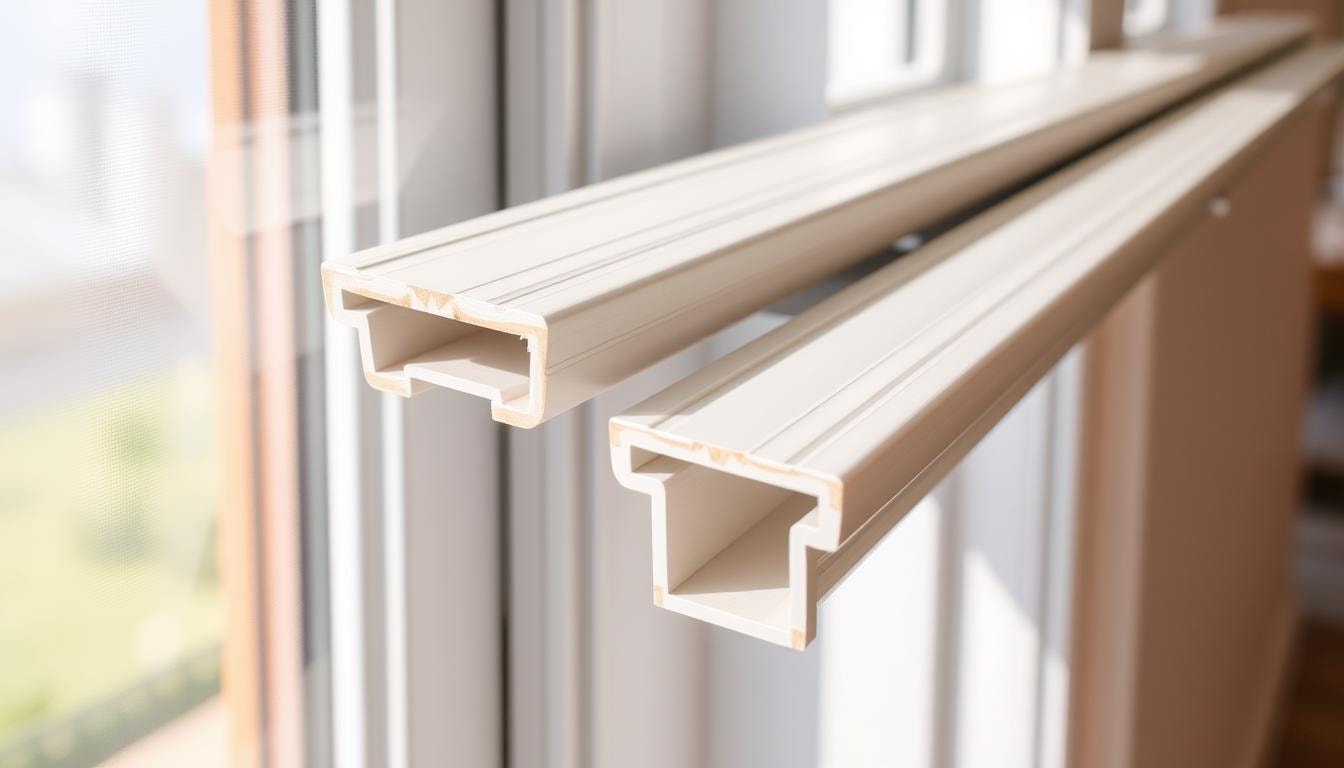
Using the right jamb extensions makes windows fit seamlessly in thicker walls. This creates a beautiful and efficient window system.
The Difference Between Jambs, Frames, and Mullions
“Window jamb,” “window frame,” and “mullions” are often mixed up. But they mean different things in a window system. Knowing the differences helps make sure windows work well and look good.
The window frame is the whole thing around a window. It includes the head, sill, and jambs. The jambs are the vertical and top parts of the frame. They help hold the window in place and keep it straight. Mullions are the vertical bars between windows. They add beauty or extra support in complex setups.
Knowing what each part does helps pick the right parts for repairs or replacements. It keeps the window system strong and looking good. By understanding jambs, frames, and mullions, everyone can make sure windows work right and stay pretty.
Essential Components of Window Jamb Systems
Window jamb systems are key to a window’s performance. They include parts that boost energy efficiency and make windows easy to use. Let’s look at the main parts of a window jamb system.
Jamb Liners and Inserts
Jamb liners or inserts can update or replace old window jambs without removing the frame. They make windows slide smoothly, saving energy. These liners are made from strong materials like vinyl or aluminum, lasting a long time.
Weather Stripping and Sealing
Sealing the window jamb system well is important for keeping energy in and drafts out. Weather stripping, made from foam, rubber, or silicone, is put along the jamb and sash. It seals the window tight, helping it keep warm or cool better and saving on energy costs.
Track and Rail Systems
The track and rail systems inside the jamb make windows move smoothly. They let windows slide, tilt, or swing open and closed easily. These systems help windows work well, making them easy to use.
Knowing and taking care of these key parts of the window jamb system helps windows work their best. This means they save energy and last longer.
Energy Efficiency and Proper Jamb Installation
Installing window jambs right is key for better energy use. Good jambs help keep the cold out and the warm in. They also stop air and water leaks. To keep your home warm, use caulk to seal any gaps around the jambs.
Weather-stripping is also vital. It goes around the parts of the window that move. This helps block drafts and makes your home more energy-efficient. For more insulation, think about using jamb liners or inserts. They’re affordable and work well on older windows without needing a full replacement.
- Apply caulk around the window jambs to seal cracks and gaps, improving insulation and preventing air and water leaks.
- Install weather-stripping around the moveable parts of the window to minimize drafts and enhance energy efficiency.
- Consider using jamb liners or inserts to add an extra layer of insulation and improve the functionality of older windows.
- Low-emissivity (Low-E) window films can help reduce heat transfer and further improve energy efficiency.
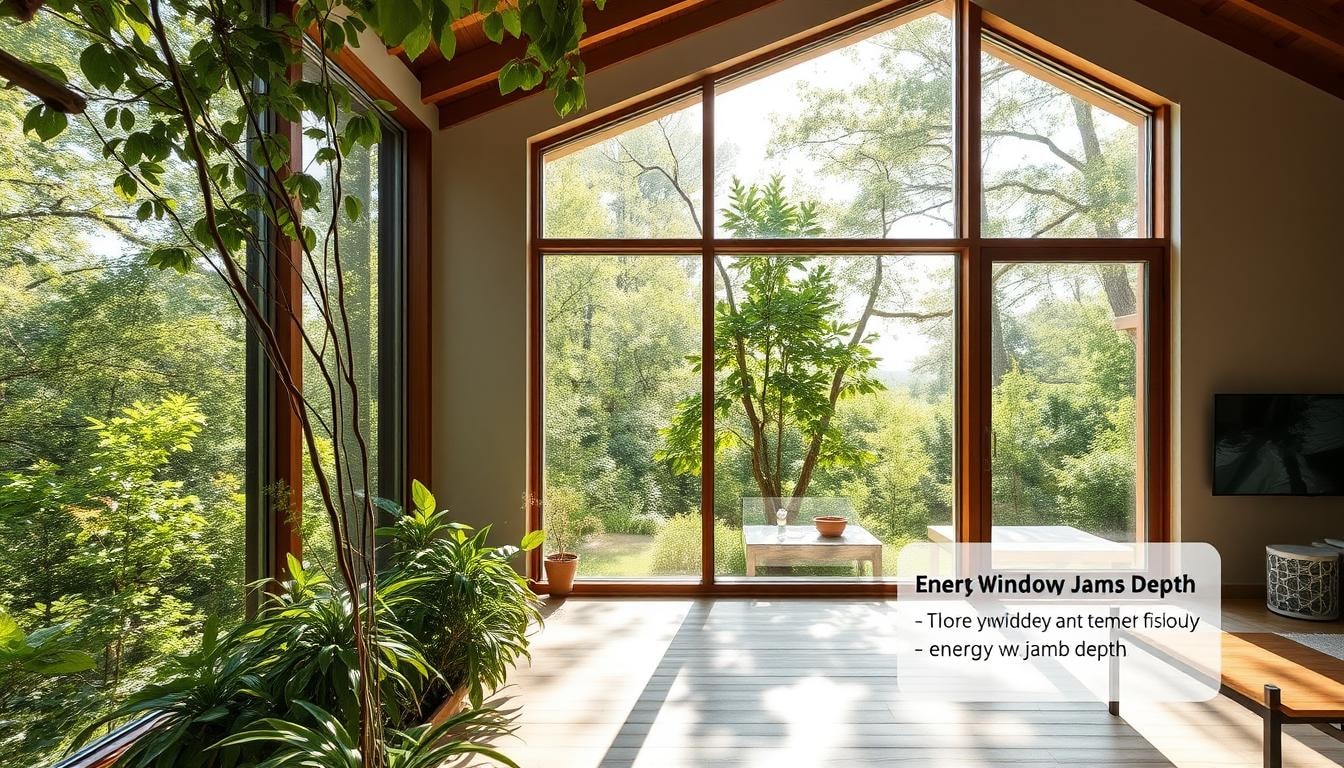
By making sure your jambs are installed correctly and using these tips, you can make your windows work better. Keeping your windows in good shape with regular checks and maintenance is also important. This helps them stay efficient for a long time.
Professional Installation and Measurement Guidelines
Installing new windows needs a pro for the right fit. Experts use special tools and follow steps to make sure the window fits perfectly.
Tools and Equipment
Installers use tools like a metal tape measure and a level. These tools help them get exact measurements, even for tricky windows.
Step-by-Step Process
- Measure the inside and outside of the window frame to find the rough opening size.
- Check if the frame is level and plumb, making adjustments if needed.
- Get the rough opening ready by removing blocks and making sure it’s smooth.
- Put the new window in place, following the maker’s guide.
- Seal any gaps between the window and the opening for a tight fit.
Common Installation Challenges
One big challenge is dealing with odd or old home sizes. Pros can measure right and pick the best window size. They also make sure the window is aligned correctly.
For tricky or custom window jobs, it’s best to talk to window makers or pros. They help with accurate measurements and a smooth install.
Maintenance and Care for Window Jambs
Keeping your window jambs in good shape is key. Regular cleaning and checks can stop problems before they start. This keeps your windows working well.
Begin by cleaning the jambs often. Use a soft-bristled brush or vacuum to get rid of dust and dirt. For tougher stains, mix mild detergent with warm water and gently scrub. Make sure they dry completely before you do more.
- Look for damage like cracks, warping, or rot in the jambs. Fix any problems right away to avoid more damage.
- Use a silicone-based lubricant on moving parts like sliding tracks. Do this at least once a year, or more if you live in a humid or salty area.
- Check the weatherstripping around the jambs. Replace it if it’s worn or damaged. Good sealing keeps energy in and drafts out.
- Make sure the weep holes in the jambs are clear. This helps water drain properly and prevents buildup.
For the best care, get professional inspections now and then. Experts can check your jambs and suggest repairs or upgrades.
By following these easy steps, you can make your window jambs last longer. This ensures your windows work great, saving energy and keeping you comfortable.
Get Expert Guidance from Budget Windows
Are you planning a window or door replacement project? Don’t settle for less than the best. Contact the experts at Budget Windows to ensure your new windows and doors not only provide structural support and energy efficiency, but also seamlessly integrate with your interior wall surface and sill.
Our experienced team will work closely with you to measure the window opening accurately, recommend the ideal materials like primed wood or extruded vinyl extension jambs, and oversee a proper installation that keeps your home’s aesthetic appeal and cohesive look intact. We’ll also help you address any critical factors like accommodating thicker walls, providing a snug fit, and minimizing energy loss.
Trust the window manufacturers and installation professionals at Budget Windows to deliver a replacement project that leaves your home looking and performing its best. Call us today to schedule a consultation and get the expert guidance you deserve.
Conclusion: Ensuring Optimal Window Performance
Knowing how to install window jambs is key for great window performance. You need to measure right, choose the right materials, and get a pro to install it. This keeps your windows strong, saves energy, and looks good.
Think about wall thickness, window type, and building rules when installing windows. This helps get the job done well. Paying attention to details and following standards is crucial for lasting results.
Investing in good window jambs, expert installation, and regular care boosts a home’s energy use, safety, and looks. With the right steps, your windows will work great for many years.
FAQs
What is the standard window jamb depth?
The standard window jamb depth typically ranges from 3 1/4 inches to 4 9/16 inches.
How can window jamb extensions be used to accommodate thicker walls?
Window jamb extensions can be attached to the standard jambs to extend the depth and accommodate thicker walls. Common extension materials include vinyl, wood, and composite.
Why is proper installation of window jambs important for energy efficiency?
Proper installation of window jambs is crucial for energy efficiency. Caulking around the jambs to seal gaps, and installing weather-stripping can help minimize air leaks and drafts, improving the home’s insulation.
What tools and steps do professionals use to ensure a proper window installation?
Professionals use tools like metal tape measures and levels to accurately measure the window opening. They then prepare the rough opening, place the new window, and seal any gaps for a snug fit.
How can homeowners maintain and care for window jambs to keep them in optimal condition?
Homeowners should regularly clean the jambs, check for damage, lubricate moving parts, and inspect the weather-stripping. Addressing any issues promptly can help prevent further problems and maintain the window’s overall performance.





